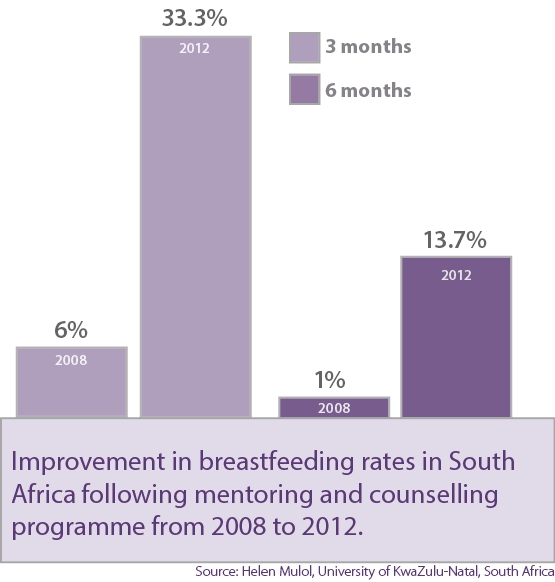Babies in South Africa that would once be at high risk of malnutrition, disease and even death, now have brighter futures as nuclear techniques help mothers become more diligent about exclusive breastfeeding for the baby’s first six months.
Breastfed children are more resistant to disease and infection compared to formula-fed children, points out the World Health Organization, which recommends that from birth up to six months of age babies should drink only breast milk. Research indicates that breastfed babies are less likely to develop diabetes, cardiovascular disease and cancer later in life.
“South Africa has very poor exclusive breastfeeding rates and improving breastfeeding practices in order to reverse the dismal infant mortality rates in our country has now become an urgent priority,” said Anna Coutsoudis, Professor in the Department of Paediatrics and Child Health at the University of KwaZulu-Natal in South Africa.
Healthcare practitioners, especially those in developing countries, have been promoting this concept in clinics, health centres and maternity wards in order to prevent malnutrition, disease and eventually death in infants.
Health officials in South Africa thought their efforts were successful, because research — which relied on mothers’ self-reports of breastfeeding frequency — showed a significant increase in numbers. However, the infant mortality rate did not show a commensurate drop.
In 2013, around 1.1 million babies were born in South Africa, and 33 babies out of every 1000 live births ended up dying within a year, according to the country’s official statistics.
Something was not right.
Nuclear lie detector
In 2010, researchers in South Africa, with funding and support from the IAEA, started using a nuclear non-radioactive method called the deuterium dilution technique (see box) to get accurate figures about how many babies were being exclusively breastfed, and when complementary foods were being introduced into babies’ diets.
The results were distressing and showed that the mothers’ reports of exclusive breastfeeding were a large overestimation compared to the more accurate information that was obtained by using the deuterium dilution technique, said Coutsoudis.
The programme had a big impact on improving exclusive breastfeeding rates.







